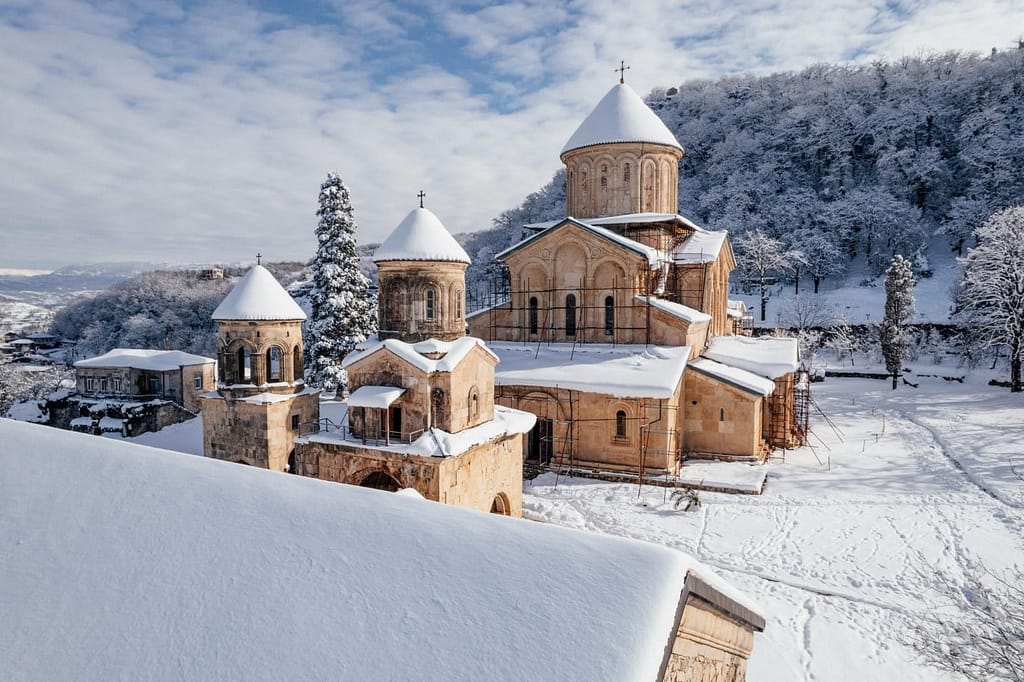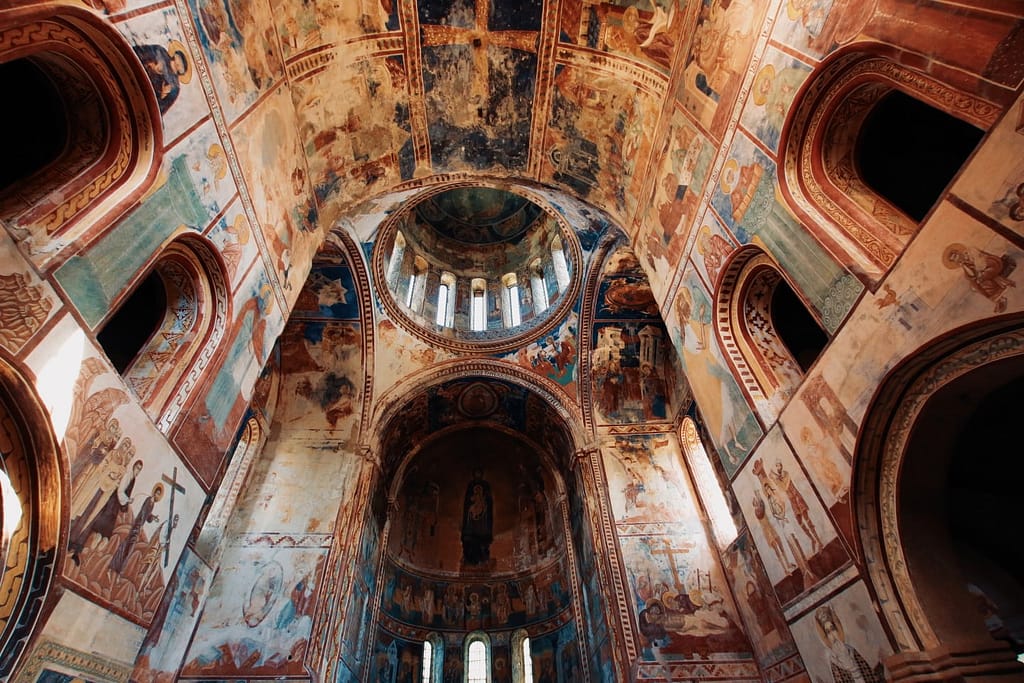Hidden among the mountains and green valleys of Georgia, Gelati Monastery is like a discovery of history and art. This sacred place is a reflection of the spirit of Georgia, connecting the past with the present. The monastery, founded in the 12th century, is one of the most important cultural and religious objects in Georgia. It not only symbolizes the spiritual power of Georgia, but also testifies to the country’s rich history and culture. Gelati Monastery reflects the evolution of Georgian architecture and art and its important role in the intersection of Middle Eastern and European cultures. Every stone, fresco and architectural detail speaks of the ancient heights of Georgia and the diversity of its culture, giving Gelati Monastery a special place in the history of Georgian and world heritage.
The importance of UNESCO World Heritage status
Gelati Monastery, founded in the 12th century, is one of the most prominent symbols of Georgian culture and spiritual life. Listed as a UNESCO World Heritage Site for its exceptional architecture and artistic values, the monastery is a heritage not only of Georgia, but of the whole world. This recognition has helped draw international attention to the preservation and restoration of the monastery, ensuring its authenticity and historical value remain for future generations. Gelati not only gives meaning to the golden age of Georgian medieval culture and science, but also becomes a living history lesson that allows us to understand the development of Christianity and Eastern Orthodox art in the region. The addition of the monastery to the UNESCO list is also an important step to encourage the international community to contribute to its preservation and draw attention and recognition to Georgia’s cultural heritage.

History and cultural significance of the monastery
Gelati Monastery was founded in 1106 by King David IV of Georgia, also known as David the High, who wanted to create a center of science and culture in his kingdom. Over the centuries, the monastery became not only an important religious object, but also a cradle of education and science, where important writings and manuscripts were collected and copied, as well as the future clergy and scientists of Georgia were trained. The monastery functioned as an intellectual center where medieval Georgian cultural and scientific ideas were disseminated. It was a place where scientists, philosophers and theologians from various fields met, creating the foundations of knowledge and science, which later became part of the educational and cultural heritage of Georgia.
Monastery architecture and works of art
The Gelati Monastery is famous for its unique architecture, which reflects the Georgian art and construction style of the Middle Ages. The main part of the Gelati Monastery is the Church of the Virgin Mary of Gelati, where valuable frescoes and icons are preserved. These artworks are not only religious symbols, but also important historical works that tell the story of the development of medieval art and culture in the region. Frescoes and icons are outstanding examples of Georgian art masterpieces and are of exceptional importance for both spiritual and cultural heritage. The frescoes of the Gelati Monastery reflect the fusion of Eastern and Western cultures, showing both Byzantine and local Georgian art styles. Art here is not only a religious or spiritual way of expression, but also a historical testimony that reveals past cultural connections and the influence of other cultures.

The monastery today
Today, the Gelati Monastery is not only an active place of prayer, but also one of the largest cultural objects of Georgia. The monastery is open to visitors and is one of the most popular tourist attractions. As part of the UNESCO program, restoration work was started on the monastery to restore its historic interior and exterior. The restoration work is important not only for the preservation of the monastery, but also for the disclosure and opening of its past, cultural and artistic heritage to the world. These works help to restore and preserve the authenticity of the monastery, giving future generations the opportunity to see and know this historical and cultural place. In addition, the monastery is an active center of teaching and education, which remains an important part of the spiritual life of Georgia today, showing how cultural heritage can be integrated into the modern world and how history can live on in today’s modern society.
Gelati Monastery is a living part of Georgian history and culture, whose importance and significance is recognized worldwide. Its inclusion in the UNESCO World Heritage List is an important step in ensuring that this priceless piece of architecture is preserved for future generations. Gelati is not only a treasure of Christianity and art, but also a place where you can experience the spirit of Georgia, its history and cultural heritage. By visiting Gelati Monastery, every visitor can experience the depth of history, understand its significance and enjoy the unique beauty of art and architecture.
